 W
WInternet art is a form of new media art distributed via the Internet. This form of art circumvents the traditional dominance of the physical gallery and museum system. In many cases, the viewer is drawn into some kind of interaction with the work of art. Artists working in this manner are sometimes referred to as net artists.
 W
WNeomodern or neomodernist architecture is a reaction to the complexity of postmodern architecture and eclecticism in architecture, seeking greater simplicity.
 W
WArchitectural icon is a term from Architecture criticism and designates buildings that are or were groundbreaking or claim uniqueness because of their design.
 W
WArtPrize is an art competition and festival in Grand Rapids, Michigan. Anyone over the age of 18 can display their art, and any space within the three-square-mile ArtPrize district can be a venue. There are typically over 160 venues such as museums, galleries, bars, restaurants, hotels, public parks, bridges, laundromats, auto body shops, and more.
 W
WIn the arts, bricolage is the construction or creation of a work from a diverse range of things that happen to be available, or a work constructed using mixed media.
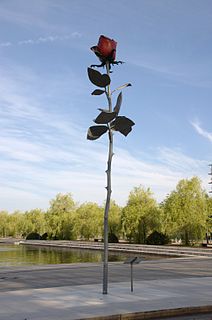 W
WContemporary art is the art of today, produced in the second half of the 20th century or in the 21st century. Contemporary artists work in a globally influenced, culturally diverse, and technologically advancing world. Their art is a dynamic combination of materials, methods, concepts, and subjects that continue the challenging of boundaries that was already well underway in the 20th century. Diverse and eclectic, contemporary art as a whole is distinguished by the very lack of a uniform, organising principle, ideology, or "-ism". Contemporary art is part of a cultural dialogue that concerns larger contextual frameworks such as personal and cultural identity, family, community, and nationality.
 W
WContinental philosophy is a set of 19th- and 20th-century philosophical traditions from mainland Europe. This sense of the term originated among English-speaking philosophers in the second half of the 20th century, who used it to refer to a range of thinkers and traditions outside the analytic movement. Continental philosophy includes German idealism, phenomenology, existentialism, hermeneutics, structuralism, post-structuralism, deconstruction, French feminism, psychoanalytic theory, and the critical theory of the Frankfurt School as well as branches of Freudian, Hegelian and Western Marxist views.
 W
WThe term digital native describes a young person who has grown up in the digital age, in close contact with computers, the Internet, and video game consoles, and later mobile phones, social media, and tablets. The term is often used to refer to millennials, Generation Z, and Generation Alpha; the latter two are sometimes described as distinct "neo-digital natives", "true" digital natives, or "digital integrators".
 W
WDigitality is used to mean the condition of living in a digital culture, derived from Nicholas Negroponte's book Being Digital in analogy with modernity and post-modernity.
 W
WDiscourse analysis (DA), or discourse studies, is an approach to the analysis of written, vocal, or sign language use, or any significant semiotic event.
 W
WThe End of History and the Last Man (1992) is a book of political philosophy by American political scientist Francis Fukuyama which argues that with the ascendancy of Western liberal democracy—which occurred after the Cold War (1945–1991) and the dissolution of the Soviet Union (1991)—humanity has reached "not just ... the passing of a particular period of post-war history, but the end of history as such: That is, the end-point of mankind's ideological evolution and the universalization of Western liberal democracy as the final form of human government." For the book, which is an expansion of his essay, "The End of History?" (1989), Fukuyama draws upon the philosophies and ideologies of Georg Wilhelm Friedrich Hegel and Karl Marx, who define human history as a linear progression, from one socioeconomic epoch to another.
 W
WMikhail Naumovich Epstein is a Russian-American literary scholar and essayist who is Samuel Candler Dobbs Professor of Cultural Theory and Russian Literature at Emory University, Atlanta, US. He moved there from Moscow, USSR, in 1990. He has also worked as a Professor of Russian and Cultural Theory at Durham University, UK, from 2012 to 2015, where he was the founder and Director of the Centre for Humanities Innovation at Durham University.
 W
WThe evil clown is a subversion of the traditional comic clown character, in which the playful trope is instead depicted in a more disturbing nature through the use of horror elements and dark humor. The modern archetype of the evil clown was popularized by DC Comics character the Joker starting in 1940 and again by Pennywise in Stephen King's 1986 novel It. The character can be seen as playing on the sense of unease felt by sufferers of coulrophobia, the fear of clowns.
 W
WPaul Karl Feyerabend was an Austrian-born philosopher of science best known for his work as a professor of philosophy at the University of California, Berkeley, where he worked for three decades (1958–1989). At various points in his life, he lived in England, the United States, New Zealand, Italy, Germany, and finally Switzerland. His major works include Against Method (1975), Science in a Free Society (1978) and Farewell to Reason (1987). Feyerabend became famous for his purportedly anarchistic view of science and his rejection of the existence of universal methodological rules. He was an influential figure in the sociology of scientific knowledge. Asteroid (22356) Feyerabend is named in his honour.
 W
WJohn Miles Foley was a scholar of comparative oral tradition, particularly medieval and Old English literature, Homer and Serbian epic. He was the founder of the academic journal Oral Tradition and the Center for Studies in Oral Tradition at the University of Missouri, where he was Curators' Professor of Classical Studies and English and W. H. Byler Endowed Chair in the Humanities.
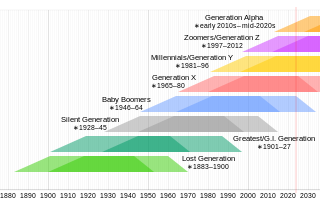 W
WGeneration X is the demographic cohort following the baby boomers and preceding the millennials. Researchers and popular media use the early-to-mid-1960s as starting birth years and the late 1970s to early 1980s as ending birth years, with the generation being generally defined as people born from 1965 to 1980. By this definition and U.S. Census data, there are 65.2 million Gen Xers in the United States as of 2019. Most members of Generation X are the children of the Silent Generation and early boomers; Xers are also often the parents of millennials and Generation Z.
 W
WHeterotopia is a concept elaborated by philosopher Michel Foucault to describe certain cultural, institutional and discursive spaces that are somehow ‘other’: disturbing, intense, incompatible, contradictory or transforming. Heterotopias are worlds within worlds, mirroring and yet upsetting what is outside. Foucault provides examples: ships, cemeteries, bars, brothels, prisons, gardens of antiquity, fairs, Muslims baths and many more. Foucault outlines the notion of heterotopia on three occasions between 1966-67. A talk given to a group of architects is the most well-known explanation of the term. His first mention of the concept is in his preface to 'The Order of Things' and refers to texts rather than socio-cultural spaces.
 W
WIn the 21st century, a hipster is a member of a subculture that is defined by claims to authenticity and uniqueness yet, ironically, is notably lacking in authenticity and conforms to a collective style. The subculture embodies a particular ethic of consumption which seeks to commodify the idea of rebellion or counterculture. Fashion is one of the major markers of hipster identity. Members of the subculture typically do not self-identify as hipsters, and the word hipster is often used as a pejorative for someone who is pretentious or overly concerned with appearing trendy or fashionable in a non-mainstream way. Stereotypical elements include vintage clothes, alternative fashion, or a mixture of different fashions, often including skinny jeans, checked shirts, knit beanies, a full beard or deliberately attention-grabbing moustache, and thick-rimmed or lensless glasses.
 W
WIn sociology, the post-industrial society is the stage of society's development when the service sector generates more wealth than the manufacturing sector of the economy.
 W
WThe Information Age is a historical period that began in the mid-20th century, characterized by a rapid epochal shift from the traditional industry established by the Industrial Revolution to an economy primarily based upon information technology. The onset of the Information Age can be associated with the development of transistor technology.
 W
WPeter Ludlow, who also writes under the pseudonym Urizenus Sklar, is an American philosopher of language. He is noted for interdisciplinary work on the interface of linguistics and philosophy—in particular on the philosophical foundations of Noam Chomsky's theory of generative linguistics and on the foundations of the theory of meaning in linguistic semantics. He has worked on the application of analytic philosophy of language to topics in epistemology, metaphysics, and logic, among other areas.
 W
WMassurrealism is a portmanteau word coined in 1992 by American artist James Seehafer, who described a trend among some postmodern artists that mix the aesthetic styles and themes of surrealism and mass media—including pop art.
 W
WHerbert Marshall McLuhan was a Canadian philosopher, whose work is among the cornerstones of the study of media theory. Born in Edmonton, Alberta, and raised in Winnipeg, Manitoba, McLuhan studied at the University of Manitoba and the University of Cambridge. He began his teaching career as a professor of English at several universities in the US and Canada before moving to the University of Toronto in 1946, where he remained for the rest of his life.
 W
WMonty Python’s Flying Circus is a British surreal sketch comedy series created by and starring the comedy group Monty Python, consisting of Graham Chapman, John Cleese, Eric Idle, Terry Jones, Michael Palin and Terry Gilliam, aka the "Pythons". The first episode was recorded at the BBC on 7 September 1969 and premiered on 5 October on BBC1, with 45 episodes airing over four series from 1969 to 1974, plus two episodes for German TV.
 W
WMy Back Pages: Reviews and Essays by Steven Moore is a collection of book reviews that were originally published in periodicals from the late 1970s onward.
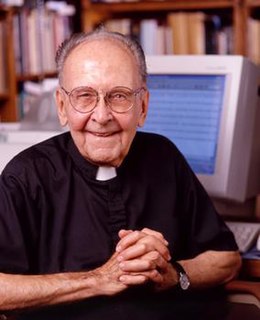 W
WWalter Jackson Ong was an American Jesuit priest, professor of English literature, cultural and religious historian, and philosopher. His major interest was in exploring how the transition from orality to literacy influenced culture and changed human consciousness. In 1978 he served as elected president of the Modern Language Association.
 W
WOver Your Cities Grass Will Grow is a 2010 Sophie Fiennes documentary about the German industrial artist Anselm Kiefer's creation of a gesamtkunstwerk in an abandoned factory complex outside Barjac, France. Kiefer moved to the South of France from Germany in 1993 and began creating his art installation, "La Ribaute" on 35 acres of land belonging to an old silk factory. The film begins with a lengthy silence to show the tunnels and spaces the artist created before showing the artist and his process in creating the installation and a large landscape painting. The film opened at Cannes in 2010 as a special screening.
 W
WThe philosophy of Søren Kierkegaard has been a major influence in the development of 20th-century philosophy, especially existentialism and postmodernism. Søren Kierkegaard was a 19th-century Danish philosopher who has been labeled by many as the "Father of Existentialism", although there are some in the field who express doubt in labeling him an existentialist to begin with. His philosophy also influenced the development of existential psychology.
 W
WPinacotheca (1967–2002) was a gallery in Melbourne, Australia. Established in 1967 by Bruce Pollard, it was ideologically committed to the avant-garde and represented a new generation of artists interested in post-object, conceptual and other non-traditional art forms.
 W
WPolish postmodernism refers to the cultural, artistic and philosophical development within the Polish society coinciding with the downfall of communism and the democratic transitions leading to Poland's 2004 accession into the European Union.
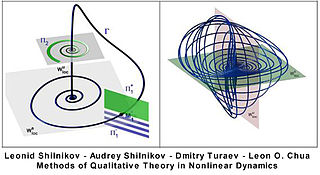 W
WPost-contemporary (PoCo) is a forward-looking aesthetic philosophy distinguished by a re-constructive, global, human ethos which posits that the aesthetic experience is universal to humanity, and that this experience can inspire understanding and transformation. It has developed in tandem with new theories of Emergence in Complexity science, as well as advances in Biosemiotics. In art historical terms, “modern” and “contemporary” arts are limited to their era and are defined by stylistic and philosophical parameters - chief among them, a critique of the classical European tradition and constructive philosophy, and secondly, the Contemporary ethos is characterized by an emphasis on transient or exclusively contemporary issues which reflect the zeitgeist. Following the legacy of Modernism, Post-Modernism and Contemporary art follow the tradition of Deconstruction and questioning, while Post Contemporary emphasizes generating new, constructive hypotheses. However, modeled after the Scientific Method, both modes are inter-dependent as the question|answer cannot exist without each other. Thus, Post-Contemporary views the history of the humanities as branching and pluralist, rather than a linear path of development. Consequently, PoCo has chosen a forking path, builds upon knowledge from all eras, and values quality, sublimity, and empathy above novelty. PoCo emphasizes empathy for all, regardless of race, gender, sexual orientation, or creed.
 W
WPost-Islamism is a neologism in political science, the definition and applicability of which has led to an intellectual debate. Asef Bayat and Olivier Roy are among the main architects of the idea.
 W
WQueer studies, sexual diversity studies, or LGBT studies is the study of issues relating to sexual orientation and gender identity usually focusing on lesbian, gay, bisexual, transgender, gender dysphoria, asexual, queer, questioning, intersex people and cultures.
 W
WThe Field, held August 21–September 28, 1968, was the inaugural exhibition at the National Gallery of Victoria’s new premises on St Kilda Road, launched by the director of London’s Tate gallery, Norman Reid, before an audience of 1000 invitees. Hailed then, and regarded since as a landmark exhibition in Australian art history, it presented the first comprehensive display of colour field painting and abstract sculpture in the country in a radical presentation, between silver foil–covered walls and under geometric light fittings, of 74 works by 40 artists. All practised hard-edge, geometric, colour and flat abstraction, often in novel media including coloured or transparent plastic, fluorescent acrylic paints, steel and chrome. The art was appropriate to a launch of the new venue itself, designed by architect Roy Grounds, and emphatically rectilinear; cubes nested in a basalt rectangular box amongst the other buildings of the new Arts Centre, each based on a geometric solid. Echoing emerging international stylistic tendencies of the time, The Field sparked immediate controversy and launched the careers of a new generation of Australian artists.
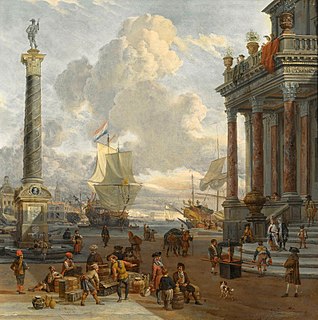 W
WTriadization is a proposed alternative to the theory of globalization. It states that political, economic and socio-cultural integration have been limited to three regions of the world: Japan and the newly industrialized countries of Southeast Asia, Western Europe and North America.